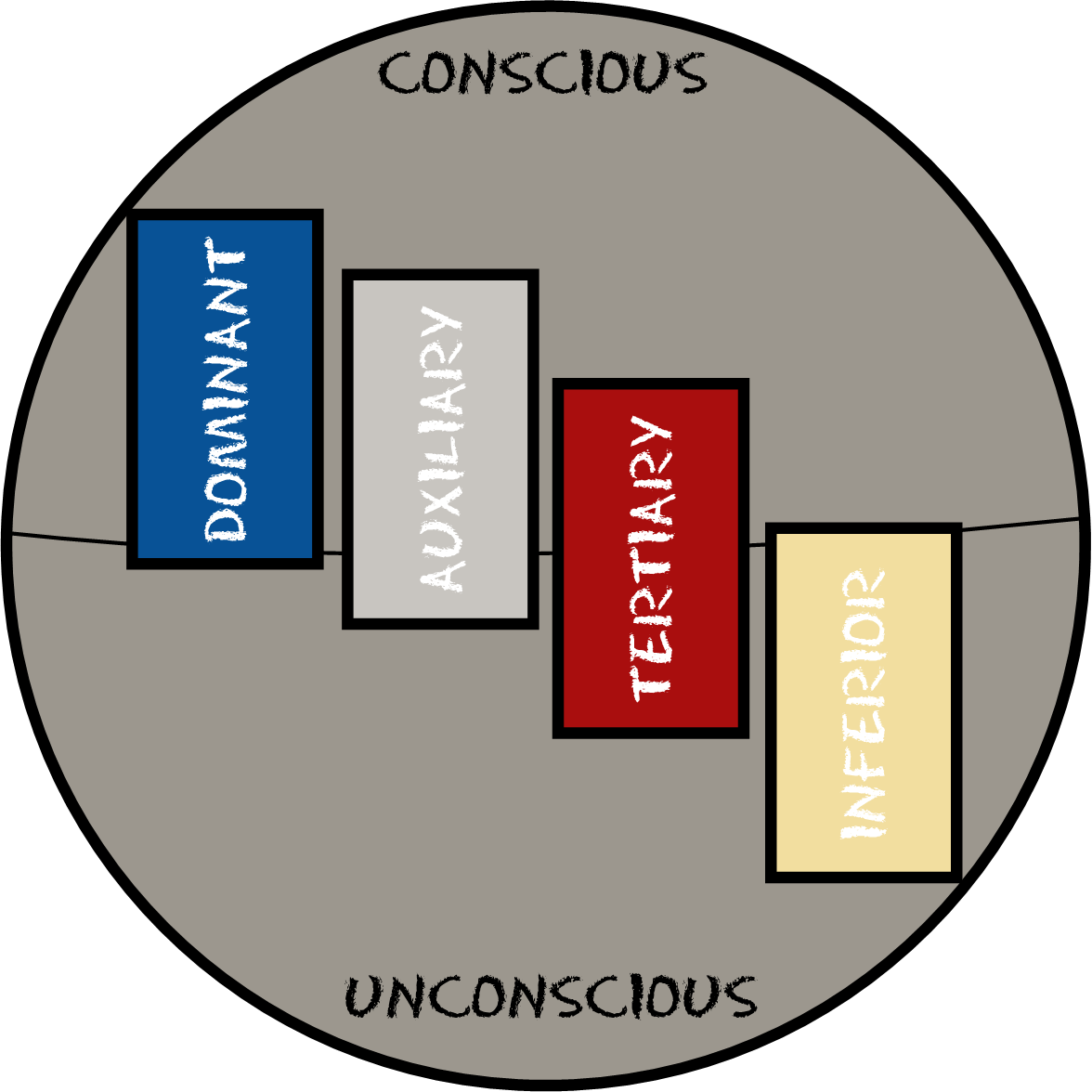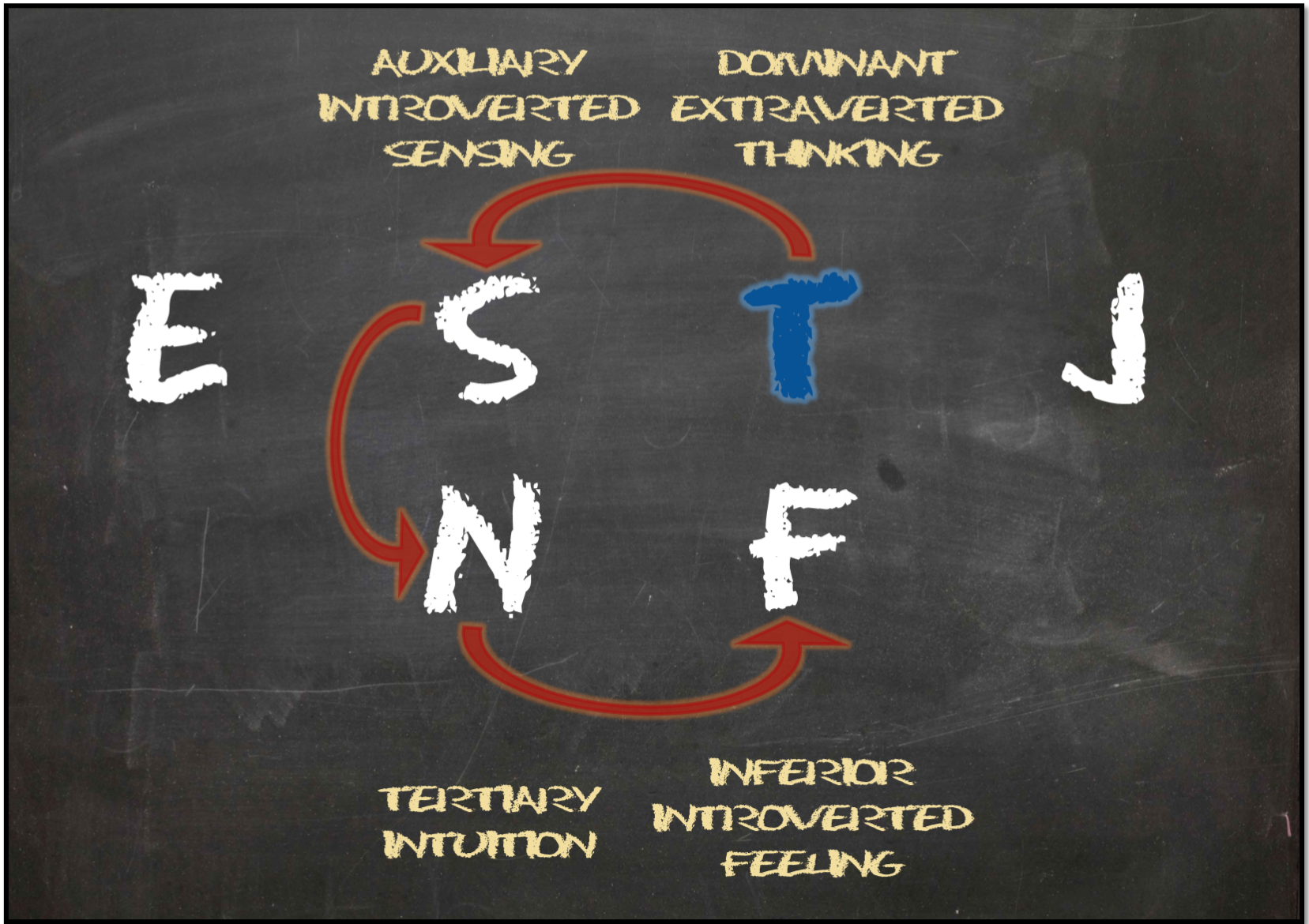
 Over the last couple of weeks, we have looked at the basics of rationale for type dynamics, and we have looked at the formula for type dynamics. Everyone who has studied Myers-Briggs at all knows that each of the eight possible preferences in type contributes certain characteristics to the type as a whole, and learning about type dynamics deepens knowledge of type by looking at the order and attitude of each of the functions. The next step is to understand how functions are impacted by attitude. In other words, how does Introverted Thinking differ from Extraverted Thinking, or how can you tell the difference between Extraverted Intuition and Introverted Intuition?
Over the last couple of weeks, we have looked at the basics of rationale for type dynamics, and we have looked at the formula for type dynamics. Everyone who has studied Myers-Briggs at all knows that each of the eight possible preferences in type contributes certain characteristics to the type as a whole, and learning about type dynamics deepens knowledge of type by looking at the order and attitude of each of the functions. The next step is to understand how functions are impacted by attitude. In other words, how does Introverted Thinking differ from Extraverted Thinking, or how can you tell the difference between Extraverted Intuition and Introverted Intuition?
Below, you will find descriptions of the four functions (S, N, T, and F) in each of the attitudes (E and I). As you read, please remember that these are not basic descriptions of the functions themselves. If you are interested in basic descriptions of the preferences, check out the eight preferences. Also, remember that the descriptions below identify some of the basic differences likely to be seen between Introverted and Extraverted forms of the functions. These differences may be more pronounced in certain types than others, and they may be more pronounced in certain individuals than others.
Sensing
| Extraverted Sensing (Se) | Introverted Sensing (Si) |
|---|---|
| Dominant preference of ESTP and ESFP | Dominant preference of ISTJ and ISFJ |
| Auxiliary (or Secondary) preference of ISTP and ISFP | Auxiliary (or Secondary) preference of ESTJ and ESFJ |
| Typically places the most importance on the concrete object, detail, or sensation itself | Typically places importance on the interpretation or impression of the concrete object, detail, or sensation |
| Is compelled to focus attention on the object or sensation that stands out the most | Follows the deep, inner collection of interests to a specific area on which to place focus |
| Finds pleasure in the outer world of concrete objects and physical activities and sensations | Finds pleasure in the highly developed and complex inner world, which holds sensory impressions others may not see |
| Must have an adequately developed judging function (Ti or Fi) to allow the personality to develop depth | Must have an adequately developed judging function (Ti or Fi) to allow outside access to the personality |
Intuition
| Extraverted Intuition (Ne) | Introverted Intuition (Ni) |
|---|---|
| Dominant preference of ENTP and ENFP | Dominant preference of INTJ and INFJ |
| Auxiliary (or Secondary) preference of INTP and INFP | Auxiliary (or Secondary) preference of ENTJ and ENFJ |
| Tends to create change of present circumstances by actually changing what is | Tends to create change of present circumstances by changing or deepening the understanding of what is |
| May find ease in expressing self and creating new concepts and ideas | May find ease in seeking and fostering deep understanding of life |
| In addition to art, science, and invention, may show creativity through politics, industry, socializing, and/or adventure | In addition to art, science, and invention, may show creativity through literature, writing, religion, and/or philosophy |
| Must have an adequately developed judging function (Ti or Fi) to allow the personality to develop depth | Must have an adequately developed judging function (Ti or Fi) to allow outside access to the personality |
Thinking
| Extraverted Thinking (Te) | Introverted Thinking (Ti) |
|---|---|
| Dominant preference of ESTJ and ENTJ | Dominant preference of ISTP and INTP |
| Auxiliary (or Secondary) preference of ISTJ and INTJ | Auxiliary (or Secondary) preference of ESTP and ENTP |
| Tends to rely on facts and experiences from the outside world to make decisions | Tends to rely on what is internally known as factual to make decisions |
| Uses Thinking as a means to an end, the completion of a project, or the resolution of a problem | Uses Thinking as a means of understanding, gaining insight, and evaluating theories, concepts, and processes |
| Often focuses on all of the available facts themselves, with less interest in their contributions to the topic at hand or their interactions with each other | Often has more interest in how facts contribute to ideas and fit together than in the facts themselves |
| May appear strongly decisive or stubborn at first and more flexible after contemplation | May appear flexible at first and more stubborn if an internal principle is struck |
Feeling
| Extraverted Feeling (Fe) | Introverted Feeling (Fi) |
|---|---|
| Dominant preference of ESFJ and ENFJ | Dominant preference of ISFP and INFP |
| Auxiliary (or Secondary) preference of ISFJ and INFJ | Auxiliary (or Secondary) preference of ESFP and ENFP |
| Tends to place emphasis on and feel value in pleasing the breadth of values, customs, and traditions in the outside community | Tends to place emphasis on and feel value in pleasing deeply held inner ideals and feelings that are held inside of the self |
| Often attempts to conform the self to the ideals of the community | Often attempts to accept the parts of the community that conform to the ideals of the self |
| Seeks to build solid relationships with others and share self to create warm and harmonious friendships and relationships | Seeks to bring the inner ideals to outer fruition, while closely protecting the depth and intensity of the inner life in a way that can appear distant to the outside world |
| May appear strongly decisive or stubborn at first and more flexible after contemplation | May appear flexible at first and more stubborn if an internal value is struck |
If you are interested in learning more about how functions are impacted by attitude, I would encourage you to revisit the old standby, Gifts Differing by Isabel Briggs-Myers and Peter B. Myers. If you are interested in type, and you have not read this book, I would encourage you to do so. It is, in my opinion, the most important book to read to get a solid understanding of MBTI® basics and background, and it is the book I used as a reference in this article.
As always, I hope this article has helped you gain insight on type, and I encourage you to leave any questions you may have in the comments section below. Thanks for reading!


